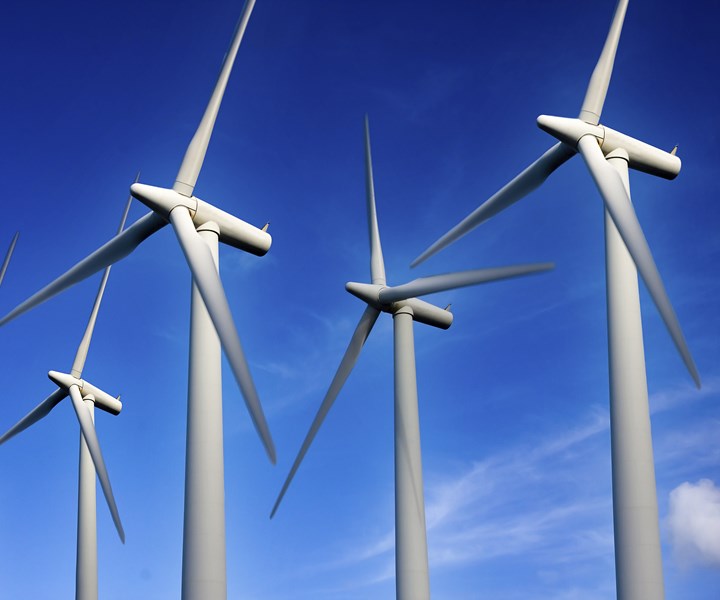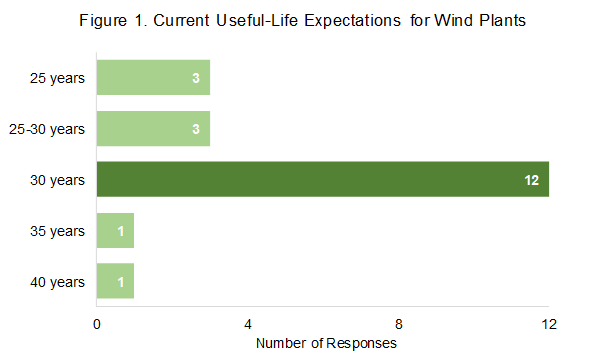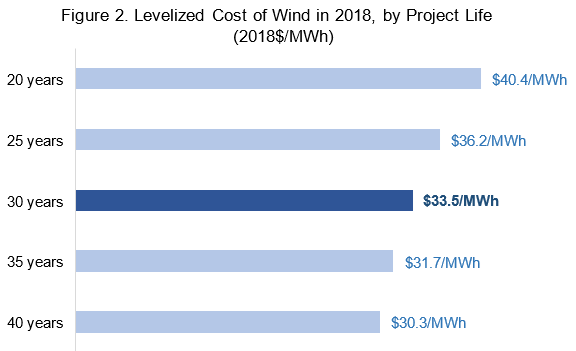University study reports expected useful life of wind projects has increased
The Lawrence Berkeley National Laboratory recently published research finds that wind project developers now expect wind projects to last about 30 years.

The expected useful life of wind projects has increased to 30 years, according to recently published research from the Lawrence Berkeley National Laboratory (Berkeley, Calif., U.S.).
The paper, titled draws on a survey of wind industry experts to clarify trends in the expected useful life of land-based wind power plants in the United States. It follows from a related survey earlier this year on wind-project operational expenditures.
According to the researchers, the expected useful life of a project is the period of time in which expected costs and revenues are assessed to determine a project’s economic viability. A longer assumed life may enhance the expected long-term profitability of a project, assuming any resulting increase in O&M costs is kept within reasonable bounds. Moreover, longer depreciation terms reduce annual book depreciation from an accounting perspective, thereby boosting net income in the near term. From a planning and modeling perspective, longer lifetimes may enable a lower levelized cost of wind energy by recovering capital costs over additional years of electricity production.
Through the project, the researchers found that most surveyed wind project developers, sponsors and long-term owners have increased project-life assumptions, from a typical term of about 20 years in the early 2000s, to about 25 years by the mid-2010s, and about 30 years more recently. Current assumptions range from 25 to 40 years, with most respondents citing 30 years (Figure 1).

Source | Lawrence Berkeley National Laboratory
According to the researchers, more mature and robust technology, coupled with improved understanding of performance, wear-and-tear and O&M practices, have been key enablers of longer assumed project lives. Another driver is the increasing desire, to capture project value beyond the 10- to 20-year term of the initial power purchase agreement.
Assuming a 20-year project life, the estimated average levelized cost of energy (LCOE) for new wind projects built in 2018 is reported to be $40.4/MWh (real 2018$). With a 25-year useful life and no change in assumed O&M expenditures or wind plant performance over time, LCOE declines by 10%, to $36.2/MWh. At the 30-year assumed life, levelized costs decrease another 7%, to $33.5/MWh. Even longer assumed lifetimes lead to further (but diminishing) LCOE reductions (Figure 2), according to the researchers.

Source | Lawrence Berkeley National Laboratory
These data and trends are intended to inform assumptions used by electric system planners, modelers and analysts, and to provide useful benchmarks to the wind industry, helping developers and assets owners to compare their expectations with those of their peers.
The research was funded by the Wind Energy Technologies Office of the U.S. Department of Energy.
Related Content
-
SAMPE 2025: Innovation, circularity and connection drive composites forward
Collaboration, workforce development and an ongoing focus on scalability and sustainability took center stage at SAMPE 2025 in Indianapolis.
-
Abaris relocates training facility to Sparks, Nevada
Larger facility gives room to expand offices, classrooms, labs and other workspaces and provides students with easy access to several local amenities.
-
FACC Academy begins training, onboarding operations
FACC’s newly launched training platform will address skilled aerospace worker shortages head on, offering more than 250 specialized training courses for its entire workforce.
.jpg;width=70;height=70;mode=crop)





